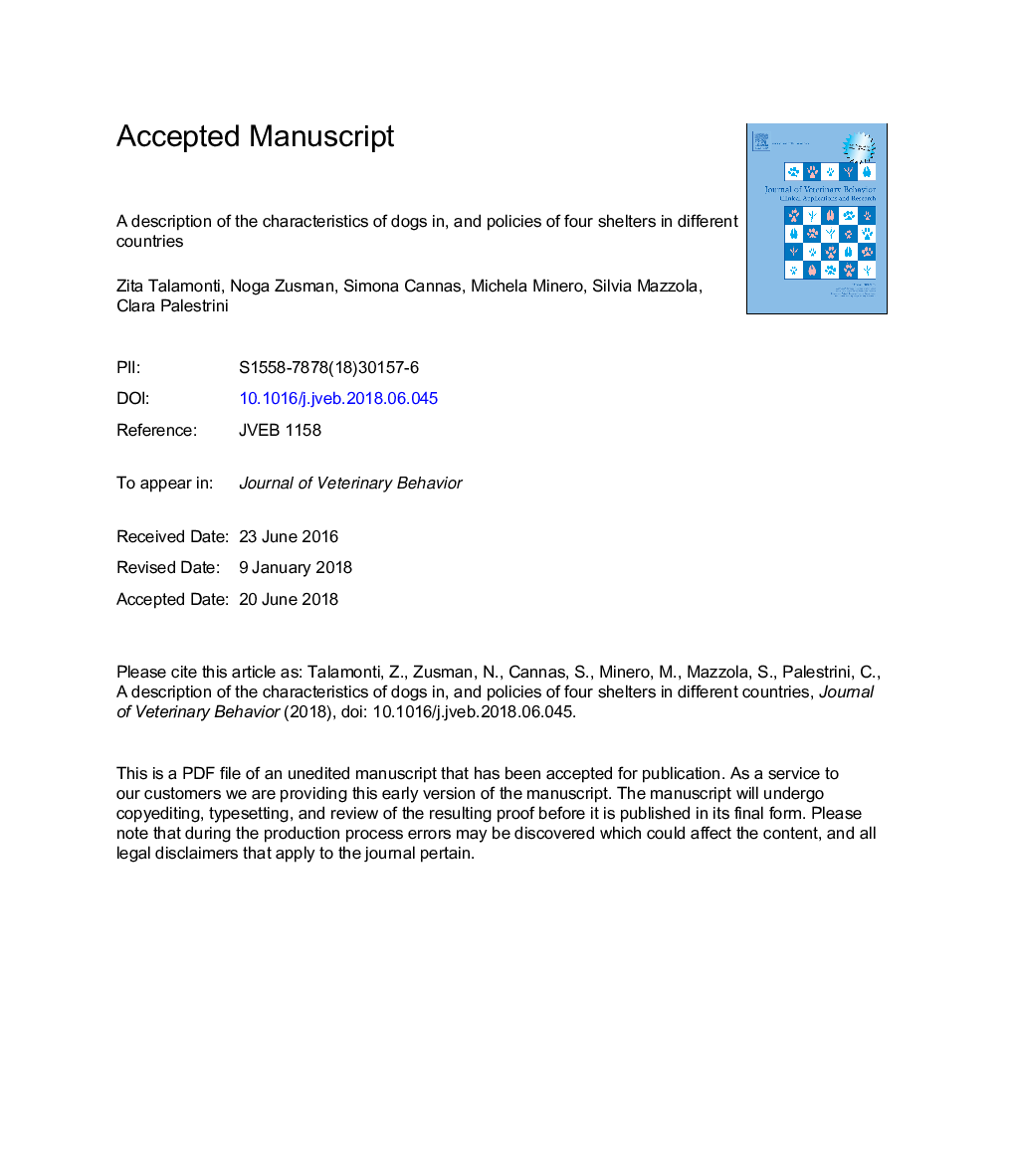| Article ID | Journal | Published Year | Pages | File Type |
|---|---|---|---|---|
| 10143136 | Journal of Veterinary Behavior: Clinical Applications and Research | 2018 | 21 Pages |
Abstract
Stray dogs can be found in most countries in the world, creating ethical and sanitary problems. Animal shelters are built to keep stray animals off the streets and thereby improve public health. Although countries have many similarities in dealing with these issues, there may also be considerable differences. Here, we describe dogs' characteristics and management policies at 4 different shelters: 2 located in North America (USA), 1 in Asia (Israel), and 1 in Europe (Italy). This comparison was intended to identify which policies led to higher animal welfare. Information collected included sex, age, breed, intake type, and outcome for the dogs. In all 4 shelters, most dogs were male and the largest groups were those of adult animals. Mongrels/moxed breeds were the most numerous “breed” in 3 of the 4 shelters. The proportion of animals returned to their owners was higher in Israel than in the USA, and notably, the Israeli and Italian shelters were “no-kill” shelters, so the percentage of euthanasia was much higher in the 2 American shelters, where euthanasia was permitted. This research highlighted some differences in the management styles of the 4 shelters. Differences may be due to the dog's characteristics at the shelters and, in part, due to different legislation across the countries regarding the care of homeless companion animals.
Keywords
Related Topics
Life Sciences
Agricultural and Biological Sciences
Animal Science and Zoology
Authors
Zita Talamonti, Noga Zusman, Simona Cannas, Michela Minero, Silvia Mazzola, Clara Palestrini,
